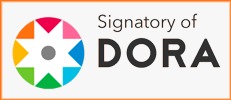Kidneys and autonomic dysfunction in children and adolescents (part I)
DOI:
https://doi.org/10.22141/2307-1257.9.2.2020.203408Keywords:
children, chronic kidney disease, autonomic dysfunction, arterial hypertensionAbstract
The article discusses the mechanisms of interaction, development and progress of cardiovascular complications in children and adolescents with chronic kidney disease. The dominant role of autonomic dysfunction in the development of cardiovascular disorders is emphasized. The mechanisms are described by which an increase in the activity of sympathetic part of autonomic nervous system leads to kidney damage. Interaction of sympathetic nervous system and renin-angiotensin system during the formation of cardiovascular and kidney diseases is considered as a component of adaptive process of the body. The universal pathogenetic factor that accompanies the development of autonomic dysfunction and chronic kidney disease in children and adolescents is activation of renin-angiotensin system. The general mechanisms for the development of cardiorenal disorders determine further unidirectional approaches to the diagnosis and treatment.
Downloads
References
Vein AM, Voznesenskaia TG, Vorob'eva OV, et al., authors; Vein AM, editor. Vegetativnye rasstroistva: klinika, diagnostika, lechenie [Vegetative disorders: clinic, diagnosis, treatment]. Moscow: MIA; 2010. 637 р. (in Russian).
Downloads
Published
How to Cite
Issue
Section
License
Copyright (c) 2020 L.I. Vakulenko

This work is licensed under a Creative Commons Attribution 4.0 International License.

 ISSN
ISSN  ISSN
ISSN 


























